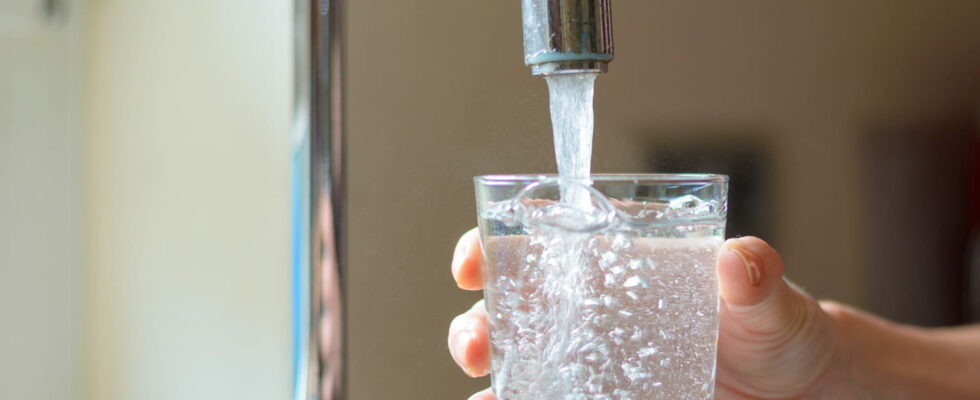Radio France’s investigative unit, in partnership with France Bleu, took samples of tap water in France. After analysis, PFAS were found in almost half of them.
PFAS, chemical molecules that can have a harmful effect on health, were the subject of a bill in France debated in 2024 aimed at banning the use of these molecules from 2025, except for essential uses and kitchen utensils. However, the study of the bill has been interrupted since the dissolution. That being said, from January 1, 2026, municipalities will have to test tap water to detect the possible presence of 20 PFAS, in order to inform residents and act accordingly.
Also called “forever pollutants,” PFAS can thrive for decades in the environment and several years in the body. They are found, for example, in frying pans, medical prostheses, food packaging or even certain pesticides and can have negative effects on cholesterol, the immune system, and even have carcinogenic properties.
The investigation unit of Radio Francein partnership with France Bluethen decided to analyze tap water in France between mid-April and early June 2024. 44 local radio stations from France Blue carried out two samples based on its population catchment area as well as locations where PFAS were already present, as already known in the work of Anses. The samples were then analyzed by the Ianesco laboratory.
In 43% of the 89 samples, PFAS were detected. 27 samples even contain PFAS that are banned or classified as carcinogenic. This represents an “increase in the risk factor of 10 or 20%”, according to toxicology professor Robert Barouki, quoted in the investigation. Five of them are even placed at worrying levels for the cities of Auxerre, Lille, Saint-Jean-de-Losne, Saint-Vit and Déols.
In addition, three others exceed the limit set in France (0.10 µg/L for the sum of 20 PFAS). This concerns samples taken in Cognac (0.187 µg/L), Saint-Symphorien-d’Ozon (0.119 µg/L) and Martres-Tolosane (0.100 µg/L1). These contaminations can be explained in particular by the presence of certain companies in these municipalities, users of PFAS, which were discharged into the water. There was also some in the fire-fighting foams, used by firefighters during operations in these municipalities.
The study also highlights the presence of banned PFAS, in small quantities, in the following municipalities: Blainville sur Orne, Saint-Martin de l’If, Saint Maximin, Aubervilliers, Strasbourg, Ammerschwihr, Belfort, Luxeul-les-bains, Montargis, Olivet, Tours, Aizenay, Lezoux, Cournon d’Auvergne, Saint-Pierre de Boeuf, Bordeaux, Artix, Avignon, Beaucaire, Fabrègues, La Garde.
Difficult treatment for the municipalities
A map was also produced, showing the 89 tap water samples with the results and the molecules found in the municipalities studied.
However, decontamination is not easy. It is necessary to be able to identify the polluted borehole, and for smaller towns, this means connecting to a larger network. It is also sometimes necessary to change the treatment system of the plant that produces drinking water. “It is estimated that the annual cost of eliminating PFAS from drinking water is 238 billion euros at the European level,” recalls Julie Lions, an expert in hydrogeochemistry. This therefore requires high treatment costs for communities, which can force them to increase residents’ water bills.
